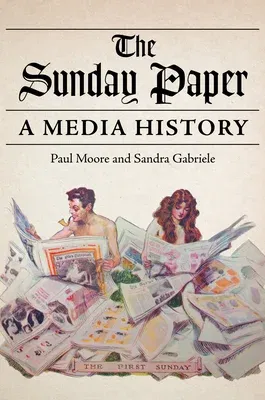Paul Moore
(Author)The Sunday Paper: A Media HistoryPaperback, 30 August 2022

Qty
1
Turbo
Ships in 2 - 3 days
Only 3 left
Free Delivery
Cash on Delivery
15 Days
Free Returns
Secure Checkout

Part of Series
The History of Media and Communication
Part of Series
History of Communication
Print Length
328 pages
Language
English
Publisher
University of Illinois Press
Date Published
30 Aug 2022
ISBN-10
0252086562
ISBN-13
9780252086564
Description
Product Details
Authors:
Book Format:
Paperback
Country of Origin:
US
Date Published:
30 August 2022
Dimensions:
23.37 x
15.49 x
2.03 cm
ISBN-10:
0252086562
ISBN-13:
9780252086564
Language:
English
Pages:
328
Publisher:
Weight:
566.99 gm